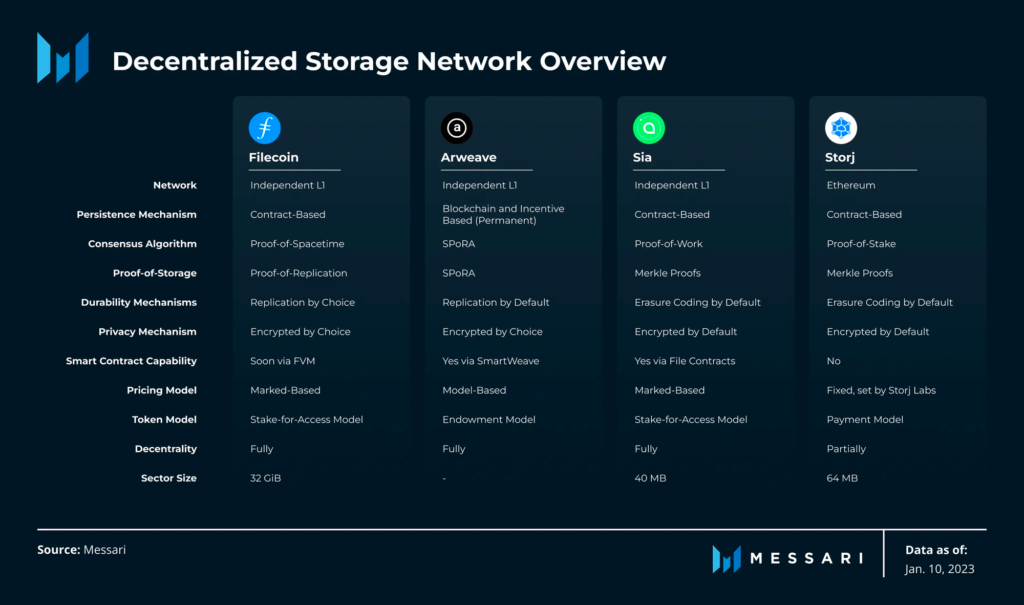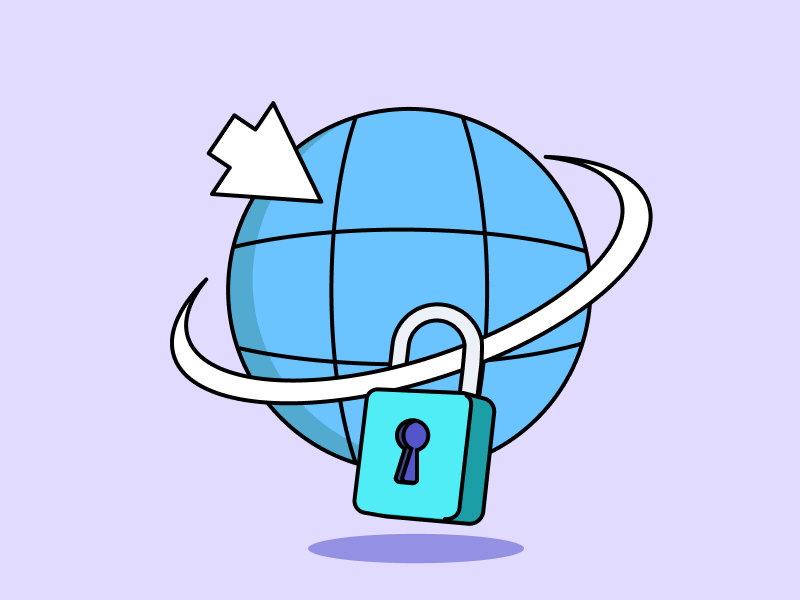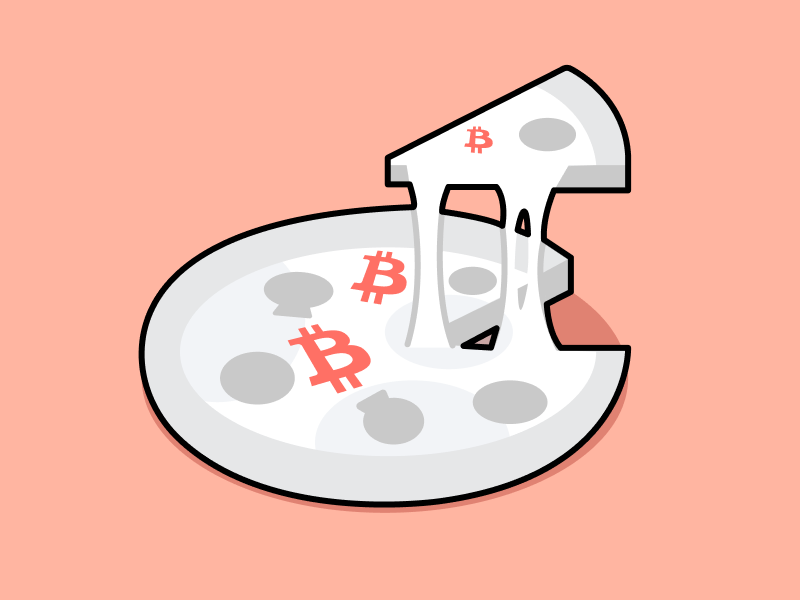What is Decentralized Cloud Storage?

When we need to store large amounts of data, we often turn to cloud storage providers such as Google Cloud or AWS. However, these providers can be expensive, especially when we need a lot of storage space. In the Web3 world, a promising alternative emerges: Decentralized Cloud Storage (DCS). DCS offers a decentralized way to store data, which can be more affordable and secure than centralized cloud storage. This article will take a closer look at Decentralized Cloud Storage, how it works, and some examples of DCS projects.
Article Summary
- ☁️ Decentralized Cloud Storage (DCS) is a decentralized data storage system where data is stored on various nodes spread across a network instead of in one central location.
- 🔐 The purpose of DCS is to provide users with more security and ownership of their data to eliminate dependency on centralized providers such as AWS or Google Cloud.
- 🌟 How DCS works involves data encryption, data splitting into small parts, and data distribution to various nodes. This can improve data security, privacy, and availability.
- 🤩 • Notable DCS projects include Filecoin, Arweave, Storj, and Siacoin.
What is Decentralized Cloud Storage (DCS)?
Decentralized Cloud Storage (DCS) is a decentralized data storage system distributed across connected computer networks (nodes). Unlike traditional centralized storage, data isn’t concentrated in a single server but is dispersed and maintained across numerous nodes interconnected within a global network.
Every node in the network has a copy of the same data. It creates high redundancy and ensures the data remains secure even if some nodes suffer failures or attacks.
Decentralized Cloud Storage is also often called Web3 storage, which involves storing data using blockchain through distributed networks. Notable projects in the DCS sector encompass Filecoin, Arweave, Storj, Siacoin, and others.
The primary objective of decentralized cloud storage is to ensure secure data storage and grant genuine data ownership to users, liberating them from sole dependence on centralized entities like Amazon Web Services (AWS), Google Cloud, or Microsoft Azure. This move away from centralized storage mitigates the risks of data breaches, privacy violations, and data censorship.
How Does Decentralized Cloud Storage Work?
Data storage on DCS generally consists of three steps: encryption, splitting, and data distribution.
Here is how data storage works on Decentralized Cloud Storage:
- Encryption: When you store data on a DCS platform, the system will automatically encrypt the data. Encryption is a process of converting data into a format that can only be read with the correct encryption key. No one can view the data without the key (private key) and valid permissions.
- Data splitting: Once the data is encrypted, it is then split into smaller pieces, copied and stored by different nodes. Each node only has a few fragments of data. You don’t need to trust the DCS provider because they can’t see your data even if they want to.
- Distribution to Nodes: Once the data is encrypted and split, the data fragments are distributed to different nodes in a global decentralized network. It means that your data is not stored in one place. These nodes are randomly selected based on their local latency and reputation.
Multiple copies of the data fragments can be placed on various nodes to increase redundancy. It ensures that the data remains available even if some nodes fail.
To reaccess the data or data reconstruction, you need the encryption key. It ensures that only the owner of the data has access to it.
Centralized Cloud Storage vs. Decentralized Cloud Storage
Centralized and decentralized data storage are two data storage models that have significant differences.
DCS service providers compete with centralized storage providers based on cost. The high data center construction costs of centralized data storage allow large service providers such as Amazon Web Services (AWS), Google Cloud, or Microsoft Azure to charge a premium. It is in contrast to DCS, which utilizes unused storage capacity worldwide, from enterprises to individuals, to provide more low-cost storage services.
From the image above, centralized storage, such as AWS, charges 23 US dollars per terabyte monthly for 50 TB of data with their S3 storage service. Meanwhile, decentralized storage providers offer lower prices compared to centralized providers.
Also, in the centralized data storage model, data is stored in data centers owned and operated by large service providers. In the DCS model, data is distributed across a global peer-to-peer network of individually operated nodes instead of a single centralized data center.
The Advantages of Using Decentralized Cloud Storage
- More Cost Efficient: DCS is often more cost-efficient as it utilizes existing resources, such as unused storage capacity on personal computers or participant servers in the network.
- Privacy: Your data is end-to-end encrypted, so no one, including service providers, can access or spy on your data.
- Higher Security: With DCS, data is encrypted and spread across many nodes. It makes it more difficult for external parties to access or steal the data. For example, on the Storj platform, data is split into 80 fragments, taking 30 fragments to reconstruct the data. It is complicated for a person who does not have the encryption key to put the pieces together.
- Data Resiliency: Since data is spread across the globe, DCS is more resilient to natural disasters or force majeure incidents that could affect centralized data centers.
Example of Decentralized Cloud Storage (DCS) Projects

1. Filecoin (FIL)
Filecoin is a storage platform built on top of the InterPlanetary File System (IPFS), a protocol for storing, addressing, and transferring data.
It is also a marketplace for data storage services. Users can choose the price and reliability of storage they want. Filecoin incentivizes storage providers by compensating FIL tokens, and users pay for this storage.
By using cryptographic proofs such as Proof-of-Replication and Proof-of-Spacetime, Filecoin ensures data security and availability. The platform creates competition in the data storage market, offering better prices and higher quality.
Users can also pay additional fees on this platform for faster data retrieval.
2. Arweave (AR)
Arweave is a decentralized data storage platform that utilizes blockweave to provide scalable, resilient, and efficient data storage. Blockweave is an innovative data structure that is more efficient than traditional blockchains.
Arweave uses a “pay once, store forever” model where a one-time payment covers the cost of storing data for all time, with no additional fees to retrieve the data.
Quoted from Messari, a small portion of each storage transaction fee goes directly to the miner, while the rest goes into the Storage Endowment protocol. The fees are used to pay Arweave miners over time, guaranteeing at least 200 years of storage.
3. Sia (SC)
Sia is a data storage platform that prioritizes user privacy and offers storage solutions that cost significantly less than traditional data storage services.
It uses blockchain-based smart contracts to ensure users and hosts fulfill their responsibilities. When they agree to a data storage transaction, the user and host each deposit Siacoin (SC) into an escrow account. Then, the host must provide cryptographic proof that it is storing the required data.
The file uploaded by the user is then divided into 30 fragments distributed to various nodes. To reconstruct the original file, Sia only needs to collect 10 segments.
4. Storj (STORJ)
Storj uses the Ethereum blockchain to facilitate payments and transactions. In addition, Storj also uses a decentralized network, Tardigrade, for durable and secure data storage. Their codebase is open source, and the STORJ token plays an important role in the ecosystem.
When uploading data to Storj, the data is split into 80 fragments and distributed globally. To reconstruct the data, Storj needs 30 fragments of the file.
Also read: What is Render Network (RNDR)? A Blockchain-Based Rendering Service.
Conclusion
Centralized storage risks data breaches, privacy, and censorship. poses significant risks in terms of data breaches, privacy concerns, and potential censorship. In contrast, decentralized storage (DCS) effectively addresses these issues by distributing data across a network of dispersed nodes, enhancing data security and ensuring improved data availability.
Although DCS is still being developed, the technology offers a viable solution with blockchain support. More research and development is needed in this area, but DCS is already being used in the real world through projects like Filecoin, Storj, etc.
References
- Sami Kassab, Seth Bloomberg, dan Mihai Grigore, The Essential Guide to Decentralized Storage Networks, Messari, accessed 24 Oktober 2023.
- Finn Miller, Top 6 Decentralized Storage Platforms for Storing Data on the Blockchain, Dailycoin, accessed 24 Oktober 2023.
- Kyle Reidhead, Is Decentralized Cloud Storage the Next Big Web3 Industry? Web3 Academy, accessed 25 Oktober 2023.
- LeewayHertz Team, A Detailed Overview of Decentralized Cloud Storage, LeewayHertz, accessed 25 Oktober 2023.
Share


